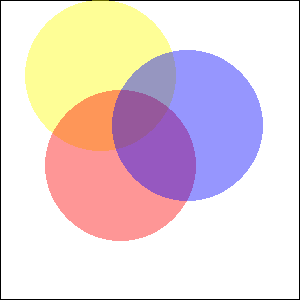If you only wish to extract the alpha value for a color, you can simply extract it like so:
<?php
$color = imagecolorat($im, 50, 50);
$alpha = $color >> 24;
?>
It actually shifts off the first 24 bits (where 8x3 are used for each color), and returns the remaining 7 allocated bits (commonly used for alpha)imagecolorallocatealpha
(PHP 4 >= 4.3.2, PHP 5, PHP 7, PHP 8)
imagecolorallocatealpha — Allocate a color for an image
Descrizione
imagecolorallocatealpha() behaves identically to
imagecolorallocate() with the addition of the transparency
parameter alpha.
Elenco dei parametri
imageUna risorsa immagine, restituita da una delle funzioni di creazione immagine, come imagecreatetruecolor().
red-
Valore della componente rossa.
green-
Valore della componente verde.
blue-
Valore della componente blu.
alpha-
A value between
0and127.0indicates completely opaque while127indicates completely transparent.
red, green
and blue parameters are integers
between 0 and 255 or hexadecimals between 0x00 and 0xFF.
Valori restituiti
A color identifier or false if the allocation failed.
Questa funzione può
restituire il Booleano false, ma può anche restituire un valore non-Booleano valutato
come false. Fare riferimento alla sezione Booleans per maggiori
informazioni. Usare l'operatore ===
per controllare il valore restituito da questa
funzione.
Log delle modifiche
| Versione | Descrizione |
|---|---|
| 8.0.0 |
image expects a GdImage
instance now; previously, a valid gd resource was expected.
|
Esempi
Example #1 Example of using imagecolorallocatealpha()
<?php
$size = 300;
$image=imagecreatetruecolor($size, $size);
// something to get a white background with black border
$back = imagecolorallocate($image, 255, 255, 255);
$border = imagecolorallocate($image, 0, 0, 0);
imagefilledrectangle($image, 0, 0, $size - 1, $size - 1, $back);
imagerectangle($image, 0, 0, $size - 1, $size - 1, $border);
$yellow_x = 100;
$yellow_y = 75;
$red_x = 120;
$red_y = 165;
$blue_x = 187;
$blue_y = 125;
$radius = 150;
// allocate colors with alpha values
$yellow = imagecolorallocatealpha($image, 255, 255, 0, 75);
$red = imagecolorallocatealpha($image, 255, 0, 0, 75);
$blue = imagecolorallocatealpha($image, 0, 0, 255, 75);
// drawing 3 overlapped circle
imagefilledellipse($image, $yellow_x, $yellow_y, $radius, $radius, $yellow);
imagefilledellipse($image, $red_x, $red_y, $radius, $radius, $red);
imagefilledellipse($image, $blue_x, $blue_y, $radius, $radius, $blue);
// don't forget to output a correct header!
header('Content-Type: image/png');
// and finally, output the result
imagepng($image);
imagedestroy($image);
?>Il precedente esempio visualizzerà qualcosa simile a:

Example #2 Convert typical alpha values for use with imagecolorallocatealpha()
Usually alpha values of 0 designate fully transparent pixels,
and the alpha channel has 8 bits. To convert such alpha values to be compatible
with imagecolorallocatealpha(), some simple arithmetic is
sufficient:
<?php
$alpha8 = 0; // fully transparent
var_dump(127 - ($alpha8 >> 1));
$alpha8 = 255; // fully opaque
var_dump(127 - ($alpha8 >> 1));
?>Il precedente esempio visualizzerà:
int(127) int(0)
Vedere anche:
- imagecolorallocate() - Allocate a color for an image
- imagecolordeallocate() - De-allocate a color for an image
User Contributed Notes 3 notes
When working with transparency, avoid imagecreate() and use imagecreatetruecolor() instead. Transparency effects may not work as expected within a palette-based image.If you need to calculate the integer representation of a color with an alpha channel, without initialising an image and using the imagecolorallocatealpha function. Then this function might be of some help:
<?php
function alphaColor($hexColor,$alpha)
{
return bindec(decbin($alpha).decbin(hexdec($hexColor));
}
echo alphaColor("FFFFFF",127);
?>